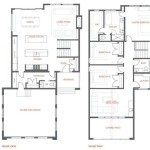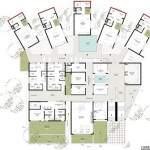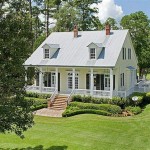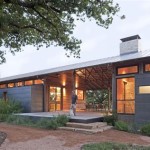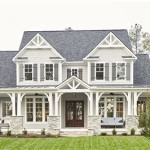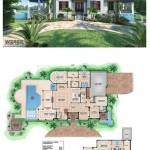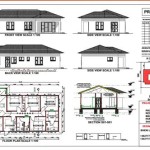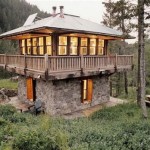Rose Seidler House Plans: A Deep Dive into Australian Modernism
The Rose Seidler House, nestled in the Sydney suburb of Wahroonga, stands as a testament to the innovative spirit of post-war Australian architecture. Completed in 1950, it represents a pivotal moment in the nation's design history, showcasing the bold embrace of modernism by architect Harry Seidler. The house, designed for Seidler's parents, became a symbol of a new era, breaking free from traditional architectural conventions and ushering in a period of experimentation and open-plan living.
The design of the Rose Seidler House was heavily influenced by the Bauhaus movement and the principles of International Style modernism. These influences are apparent in the house's clean lines, geometric forms, and emphasis on functionality. Characterized by a flat roof, open floor plan, and extensive use of glass, the house exemplifies the modernist pursuit of light, air, and a seamless connection between indoor and outdoor spaces.
The open floor plan, a revolutionary concept at the time, was a defining feature of the Rose Seidler House plans. It challenged the traditional compartmentalized layout of Australian homes, promoting a sense of spaciousness and fluidity. This open-plan design fostered a more interactive and communal living experience, blurring the boundaries between living, dining, and kitchen areas.
The use of materials played a crucial role in the house's aesthetic and functional design. Concrete, rendered brick, and steel were employed extensively, giving the structure a robust and modern feel. These materials also contributed to the house's thermal efficiency, a key consideration in Seidler's designs. Large expanses of glass, another prominent feature, not only maximized natural light but also provided panoramic views of the surrounding bushland, further integrating the house with its natural environment.
Examining the Rose Seidler House plans reveals a meticulous attention to detail in the layout and organization of spaces. The house is designed to function efficiently, with each area thoughtfully planned to maximize utility and comfort. Built-in furniture and storage solutions, a hallmark of modernist design, contribute to the clean and uncluttered aesthetic while optimizing space utilization.
The influence of the Bauhaus movement is further evident in the house's minimalist approach to decoration. Ornamentation is kept to a minimum, with the focus placed on the interplay of form, light, and materials. This minimalist aesthetic creates a sense of serenity and allows the architectural elements to take center stage.
The Rose Seidler House was not just a residence; it was a statement. It challenged prevailing architectural norms and paved the way for the acceptance of modernist principles in Australian residential design. The house's radical departure from tradition initially sparked controversy, but it ultimately became an iconic example of post-war modernism, influencing generations of architects and setting a new standard for residential architecture in Australia.
While the original Rose Seidler House plans offer a comprehensive understanding of Seidler's vision, the house has also undergone some modifications over the years. These changes, while respecting the original design intent, reflect the evolving needs of the occupants and demonstrate the adaptability of modernist architecture.
The significance of the Rose Seidler House extends beyond its architectural merits. It represents a cultural shift, embodying the optimism and forward-thinking spirit of post-war Australia. The house offers a fascinating glimpse into a period of significant social and architectural change, reflecting the embrace of new ideas and the pursuit of a modern lifestyle.
Studying the Rose Seidler House plans provides valuable insights into the principles of modernist architecture and the evolution of Australian residential design. It showcases the power of innovative design thinking and the enduring legacy of a visionary architect. The house continues to inspire and provoke discussion, serving as a timeless example of the enduring appeal of modernism.
The Rose Seidler House is now a museum, open to the public and managed by the Historic Houses Trust of New South Wales. Visitors can explore the house and experience firsthand the innovative design and spatial organization that defined this landmark building. Access to original drawings and plans further enhances the understanding of Seidler's architectural vision and the historical context of the house's creation.
The legacy of the Rose Seidler House is undeniable. It stands as a powerful symbol of architectural innovation and a testament to the enduring influence of modernism in shaping the Australian built environment. Its impact continues to resonate with architects, designers, and the public alike, ensuring its place as a cornerstone of Australian architectural history.

Rose Seidler House Wahroonga Sydney

Rose Seidler House A 1950 Modern Classic Simple Floor Plans Architecture

Floor Plane And Elevation For Rose Seidler House Planimetrie Di Case Moderni Progetti Casa Piano Architettura

Canberra House 11 Northcote Crescent Deakin 1951 52

Rose Seidler Perspective Architecture Sketch House

Rose Seidler House Floorplan Kiến Trúc Bản Vẽ
Rose Seidler House 3d Warehouse

Rose Seidler House Wahroonga
Architectural Communications The Final Project Rose Seidler House

1949 To 1956 State Library Of New South Wales

